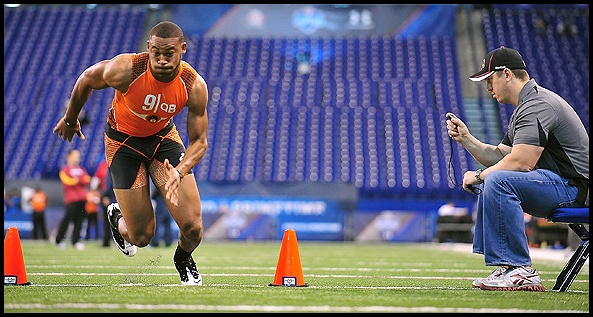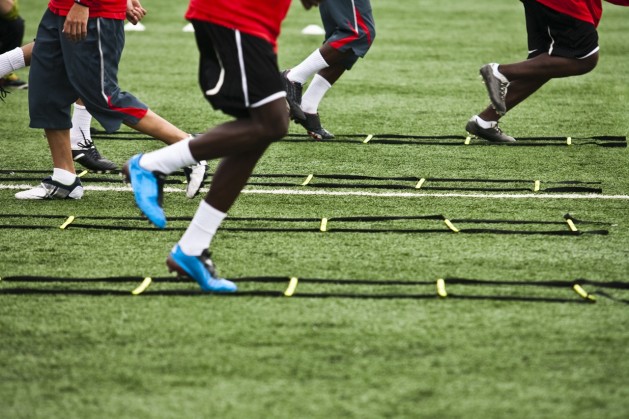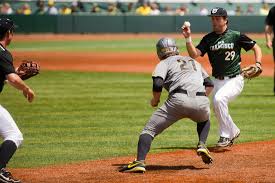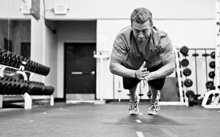How do you best improve your sport spefic speed? How can an athlete look flawless in speed and agility drills, but look terrible when he or she is in a game time situation? The answer is simple, their brains!

Watch most speed and sport team coaches doing speed work with kids and you will see endless drills that require kids running to a specific spot, changing direction, and then running to another specific spot. As the kids go through the drills they become more efficient, and ultimately get faster and run better times in those drills. However, sports aren’t decided by how fast you can get to a cone.
Now, I’m not saying these drills are useless, because we do some change of direction drills with our athletes. They are a tremendous teaching tool and are a great way to track progress. However, making them the entire basis of “speed work” is unfair to the athletes, parents, and coaches of the athletes. At 1RM Performance, we do COD work, but we use lots of other tools to get our kids faster like Single Leg Plyo's, Eccentric Training, and Resistance Training.
Any coach can put you through endless amounts of cone drills, ladder drills, and other specific drills. The frustrating part is that kids who are faster in these drills won’t necessarily be faster in their sport.

Distractions, Speed, and Your Brain
Why? It comes down to their brains. The skills that an athlete picks up from these drills have been learned with minimal distractions from the brain. Running from one cone to the other efficiently is easy, in the grand scheme of sports performance. Now, put a kid in a real competition and their brain has a lot more to think about then just running to a spot and changing direction.
In baseball and softball, running on the base path requires an athlete to think. They are thinking about what's happening in the infield: where the ball is going, where the throw is coming from, where the other base runners are, and whatever else might be going on in the game at that time. Simply put, your brain is distracted by a bunch of other stimuli, and you aren’t thinking about perfect running form.
To see this in a practice setting, work on an athlete’s ability to change direction, and then throw him into a race with a teammate. I can guarantee the previously improved mechanics are thrown out the window, and the athlete does what they were doing at the start.

Correcting The Problem With Chaos
So how can you prevent this from happening as a coach? The answer is fairly simple; progress from simple closed drills, where it is easy to detach body positioning, to more complex drills that require your athletes to think. Joe Defranco refers to this type of speed work as “Chaos” drills. Chaos, is simply what you are creating within your athletes head, ultimately decreasing the time it takes them to react to a single and or multiple stimuli.
Chaos drills can be broken down into three cataegories; Visual, Verbal or Cognitive.
1. Visual Chaos
A visual chaos drill is one that requires the athlete to react based on what they see. This could be done, by racing, a variation of tag, mirror drills, reacting to a ball, the options are endless.
2. Verbal Chaos
A verbal chaos drill is one that forces an athlete to remove vision from the initial movement, and react more on audible instinct. I find these drills to work best with baseball players. In baseball, athletes react to the sound of the bat hitting the ball before the even see the ball.
To simulate this, I often have athletes begin drills to the sound of my clap, or even to the sound of the baseball or softball player swinging in the cage.
3. Cognitive Chaos
A cognitive chaos drill is one that requires an athlete to react based on the answer to a question. The goal of these drills is to decrease the amount of time it takes for an athlete to think and react. For example, instead of having an athlete run a set route, yell either "right" or "left" and have them react to that cue. Make it harder by yelling a simple math problem and if the answer is even then they would react and move to the right, if the answer was odd they would have to react to the left.
Conclusion
The drills discussed are one of many ways to help limit the disconnect between the drills an athlete does in practice to the way they react in game time situations. As an athlete begins to move more efficiently with an increased amount of stimuli, you can bet they are also moving more efficiently on the court or field. Don't forget the ultimate purpose of these drills is to make the athlete move more efficiently.

